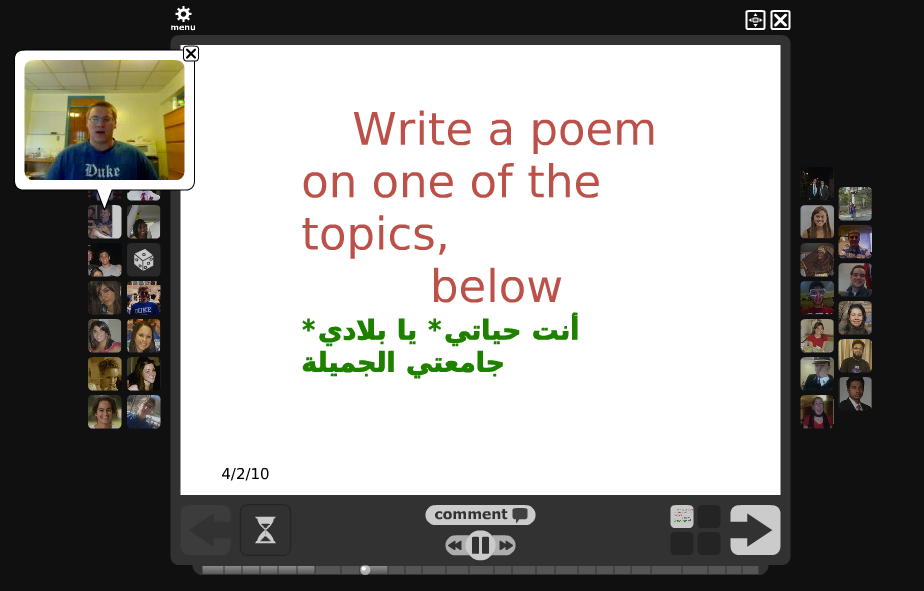Mbaye Lo, Assistant Professor of the Practice in Arabic, Asian and Middle Eastern Studies
Mbaye Lo was one of fourteen faculty and one graduate student who participated in a Spring 2010 CIT Fellowship for language faculty interested in exploring with colleagues the most effective and most efficient ways to increase students’ oral production in the target language, in order to increase students’ language learning.
 Lo wanted to use VoiceThread as a tool to create oral activities and assess oral language skills. Lo found limited research evidence that integrating technology and web based-assessment tools improve the core topics of psycholinguistics: comprehension, acquisition and production. He hoped that his use and research into the effectiveness of VoiceThread in enhancing language production would provide data that could enrich the literature on this topic.
Lo wanted to use VoiceThread as a tool to create oral activities and assess oral language skills. Lo found limited research evidence that integrating technology and web based-assessment tools improve the core topics of psycholinguistics: comprehension, acquisition and production. He hoped that his use and research into the effectiveness of VoiceThread in enhancing language production would provide data that could enrich the literature on this topic.
VoiceThread is a web-based application that allows users to create shared presentations using images, audio, video and text. Visitors may comment on the presentations using text, voice or video to create a digital conversation about the shared content.
In his course, Lo assigned two oral proficiency activities through VoiceThread. Below are examples of the activities he used with his students:


He then gave students in his Arabic 2 class a survey focusing on variables related  to the core attributes for a successful experience which are autonomy, fun, positive perception, outcome, and attitude.
to the core attributes for a successful experience which are autonomy, fun, positive perception, outcome, and attitude.
Through the survey, Lo found that 86% of students agreed or strongly agreed that VoiceThread was a good tool to use in their oral proficiency activities. In comparison to other tools they have used, 59% agreed or strongly agreed that “doing oral proficiency activities through VoiceThread is better than doing it through face-to-face interview, example OPI with tapes & CDs.” Only 19% of students disagreed with the statement that VoiceThread was easy, indicating that most found the tool easy to use. Overall, 78% of students agreed or strongly agreed that they would recommend using VoiceThread in language classes. Most importantly, 65% of students agreed or strongly agreed that doing oral proficiency assignments through VoiceThread improved their language skills.
From these survey results, Lo agreed that VoiceThread is a dynamic tool for oral production. He felt that student feedback supports using VoiceThread to enhance the five main variables of a successful oral production experience. While further analysis of the data needs to be done, this initial look shows favorable response from students and faculty who used VoiceThread.
